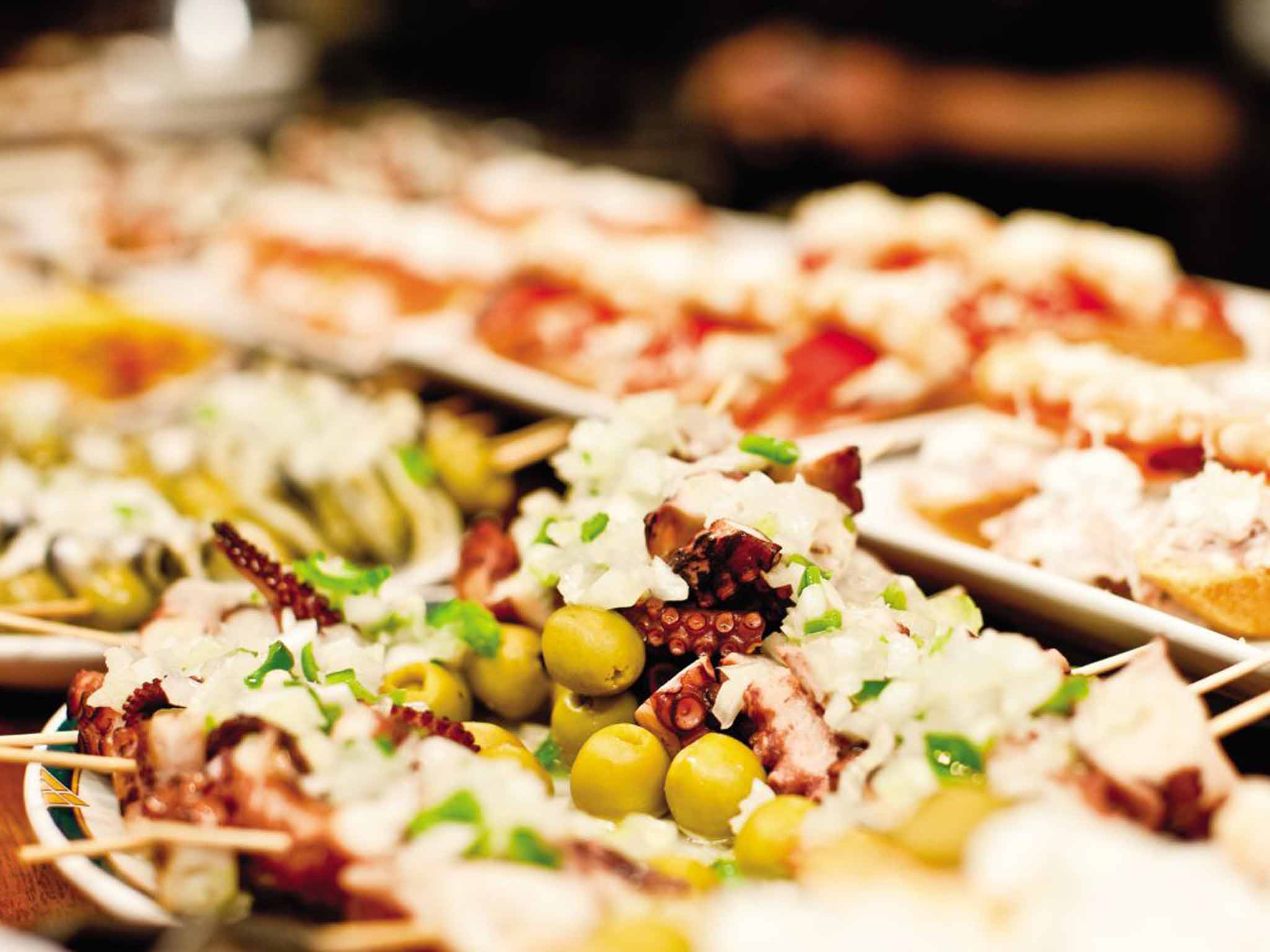The Independent's journalism is supported by our readers. When you purchase through links on our site, we may earn commission.
Inside San Sebastián's new cookery school: Get Basque to basics
Aoife O'Riordain enjoys the latest addition to the city's culinary scene

Your support helps us to tell the story
From reproductive rights to climate change to Big Tech, The Independent is on the ground when the story is developing. Whether it's investigating the financials of Elon Musk's pro-Trump PAC or producing our latest documentary, 'The A Word', which shines a light on the American women fighting for reproductive rights, we know how important it is to parse out the facts from the messaging.
At such a critical moment in US history, we need reporters on the ground. Your donation allows us to keep sending journalists to speak to both sides of the story.
The Independent is trusted by Americans across the entire political spectrum. And unlike many other quality news outlets, we choose not to lock Americans out of our reporting and analysis with paywalls. We believe quality journalism should be available to everyone, paid for by those who can afford it.
Your support makes all the difference.I'm standing in a crowded room and my mouth is popping with tiny, almost fluorescently green peas warmed in a glug of olive oil. On the other side of the table, Jaime Burgaña, the peas' producer, is waiting to hear my verdict. In San Sebastián, even the humble pea is elevated to superstar ingredient.
This food-obsessed city in northern Spain's Basque country has 16 Michelin stars within 25km of its centre. And whatever your budget, you can eat extremely well here, from the humble pintxos (tapas) bars of the old town to one of the exulted tables at Arzak, Akelarre or Martín Berasategui, the holy trinity of three-star dining rooms.
Jaime tends the teardrop peas, guisante de lagrima, at his farm on the coast in Getaria, and commands prices of up to €500 per kilo. He was one of a group assembled for the opening of the new San Sebastián Food Cookery School in the Hotel Maria Cristina, a grand confection that has sat on the banks of the River Urumea since 1912, and sparkles more than ever after a $25m (£17m) renovation. The cookery school is a sleek space in the basement – a state-of-the-art kitchen with room for up to 18 students and a long table for them to enjoy the fruits of their labours. There's also a bar for wine and sherry tastings.

San Sebastián Food is the work of Jon Warren, who abandoned his job in the City of London eight years ago to indulge his passion for the local gastro scene, and SSF now offers tours, cookery classes, wine and sherry tastings and events.
The next morning I join a pintxo masterclass with native Basque Agustin Araquistain, who takes us on a short stroll to La Brexta, the city's underground market, where he points out ingredients such as txistorra sausage and black Tolosa beans.
Back in the kitchen we meet our other teacher, Eli Susperregui. Our group has a menu to make starting with Gilda, reputedly the first pintxo, created in 1946 and taking its name from the Rita Hayworth film censored by General Franco in that year. It's a simple, moreish assembly of olive, salted anchovy and pickled guindillo peppers. We learn how to poach an egg Arzak-style and although it's not the most challenging, it's a fun way to learn about Basque food and ingredients. At the end of the four-hour class, we sit down to lunch.

The next evening I reconvene with Eli and a group of visitors to hit the streets of the 19th-century Parte Vieja (Old Town) for a txikiteo, a pintxos hunt. At 7pm, the narrow streets are already filling with hungry diners and rich aromas. San Sebastián feels comfortingly old-world. It was made fashionable by Queen Isabell II, who started coming to bathe here in 1845, but it's also known for its film festival and has cinematic good looks, with La Concha beach and Mont Urgell to the east, Mont Igeldo to the west and Santa Clara island in the bay. Next year, it takes up the mantle of European Capital of Culture with Wroclaw in Poland.
There are more than 200 pintxos bars in the Old Town; Eli recommends starting no later than 7.30 or 8pm, as dishes soon run out. The best pintxos are cooked to order and are washed down with wine, such as the dry white txakoli, or cider or beer.

We start at Goiz Argi, renowned for its prawn skewers. Next up is Zeruko, an exponent of experimental, molecular cooking, with a counter laid out with small works of art, such as a tuna salad encased in a bright shiny, tomato. By the time we hit Ganbara, the counter is three-deep with customers eagerly awaiting plates of deep-fried white asparagus tips, crab tartlets and sautéed mushrooms. Then it's on to Borda Berri for Idiazabal sheep's cheese risotto, veal cheeks and crispy pig's ears. Our last of six stops is La Viña, where we round off the evening with baked cheesecake and sweet Pedro Ximinez sherry.
Before I leave, I sweep San Sebastián Food's Gourmet Shop, leaving with several extra kilos on my check-in allowance. Sadly, there are none of Jaime's peas, but I do buy two jars of his broad bean petals. Bird's Eye will never taste the same again.
Getting there
The nearest airport is Biarritz in France, served by Ryanair (0871 246 0000; ryanair.com) from Stansted.
Staying and cooking there
Aoife O'Riordain was a guest of Hotel Maria Cristina (00 34 943 437 600; starwoodhotels.com/luxury). Doubles from €275 B&B. San Sebastián Food (00 34 943 421 143; sansebastianfood.com) has a Basque Foodie Weekend with two nights at the Hotel Maria Cristina from €450pp.
More information
Join our commenting forum
Join thought-provoking conversations, follow other Independent readers and see their replies
Comments